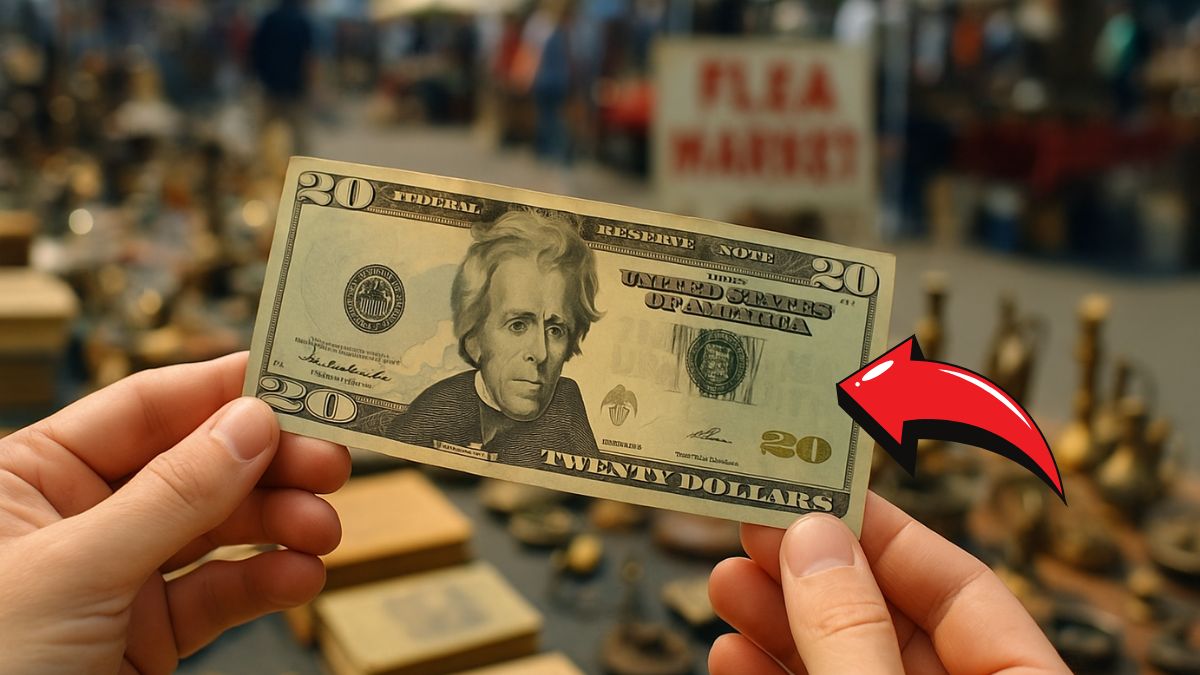In an extraordinary turn of events, a seemingly ordinary $20 bill discovered at a garage sale has captivated collectors and enthusiasts worldwide.
This misprinted note, known as the “Del Monte Note,” fetched an astounding $396,000 at auction, highlighting the immense value that rare currency errors can hold.
What Is the Del Monte Note?
The Del Monte Note is a 1996 U.S. $20 bill featuring a multicolored Del Monte banana sticker inadvertently affixed during the printing process.
This unique error, termed a “retained obstruction,” occurs when a foreign object remains on the note during printing, resulting in part of the design being printed over it.
In this case, the Treasury seal and serial numbers were printed atop the sticker, creating a one-of-a-kind collectible.
Discovery and Auction Journey
Initially discovered by a college student in Ohio who received it from an ATM, the note changed hands multiple times, each time increasing in value.
Its journey from a garage sale find to a record-breaking auction sale underscores the unpredictable nature of currency collecting.
In January 2021, the Del Monte Note was auctioned by Heritage Auctions, fetching a staggering $396,000, the highest price ever paid for an error banknote.
This sale not only set a new record but also brought widespread attention to the niche world of currency misprints, inspiring collectors and casual observers alike.
Notable $20 Bill Misprints and Their Values
Here’s a comparison of notable $20 bill misprints and their estimated values:
| Year | Error Type | Description | Estimated Value |
|---|---|---|---|
| 1996 | Retained Obstruction | Del Monte sticker printed over seal and serial numbers | $396,000 |
| 1990 | Missing First Print | Absence of initial design elements | $725 |
| 1977 | Full Offset Printing | Complete duplication of front print on back | $900 |
| 2004 | Corner Fold Over Misprint | Folded corner during printing, causing misalignment | $300 |
| 1995 | Inverted Overprint Error | Seal and serial numbers printed upside down | $1,299.95 |
Why Are Misprinted Bills Valuable?
Currency misprints are anomalies that occur during the printing process, making them rare and highly sought after by collectors.
The value of such errors depends on factors like uniqueness, visibility, and demand. The Del Monte Note stands out due to its clear and colorful obstruction, making it a prime example of a valuable misprint.
The story of the Del Monte Note serves as a compelling reminder that extraordinary value can be hidden in the most ordinary places.
Whether you’re a seasoned collector or someone who occasionally checks their wallet for rare finds, the world of currency misprints offers intriguing possibilities and the thrill of unexpected treasures.
FAQs
How can I identify a valuable misprinted bill?
Look for anomalies like misaligned prints, missing elements, or foreign objects embedded in the bill. Consulting a currency expert or using online resources can help determine its value.
Where can I sell a misprinted bill?
Reputable auction houses like Heritage Auctions or online platforms specializing in collectibles are good places to sell rare currency.
Are all misprinted bills valuable?
Not necessarily. The value depends on the rarity and uniqueness of the misprint. Common errors may not fetch high prices, but unique anomalies like the Del Monte Note can be extremely valuable.

